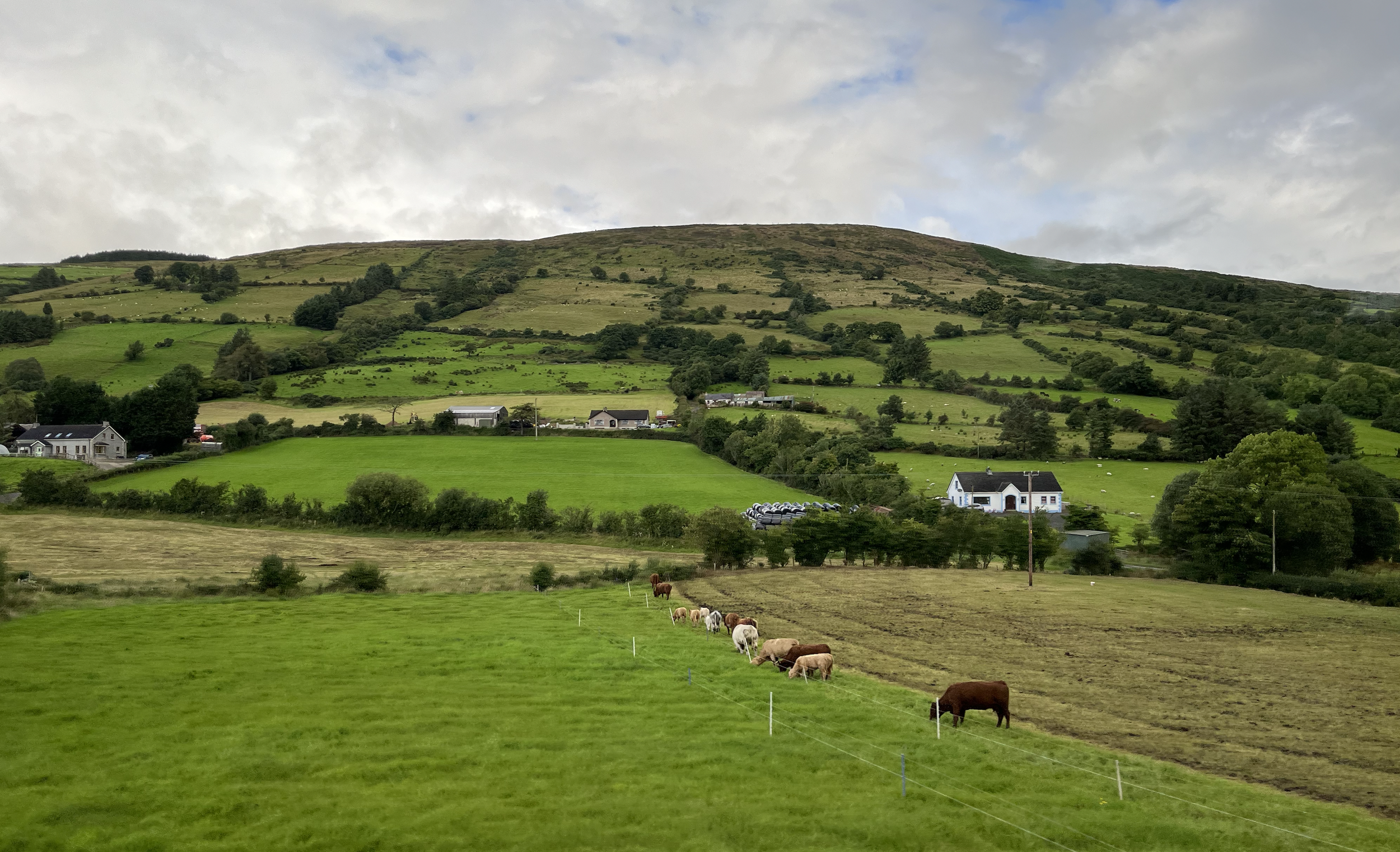Celts in the City - Part 3
Sunset behind the hills northwest of Belfast.
The ferry ride across the North Channel ended in the old industrial city of Belfast, Northern Ireland. After checking into our hotel, we took the evening to wander around the Cathedral Quarter and explore the parkway along the River Lagan.
The ten meter long Big Fish was constructed in 1999 to celebrate the post-industrial clean-up of the River Lagan.
It was a little surprising to find very few folks enjoying the fair mid-summer weather on the river walk, but it was just a Tuesday night. There was an outdoor temporary concert venue being set up near the Albert Memorial Clock. It would open for the weekend, so maybe the crowds were saving their center city visit for the show.
Built in 1869 to honor Queen Victoria's husband Albert, the clock tower is 35 meters tall. Because it was built on land fill, it has developed a lean of over a meter at the top.
On our first morning in Northern Ireland, we set out to see the rural parts of the northern counties. The coast road took us up the “Causeway Coast.” The area has been the center of Gaelic life on both sides of the Irish Sea for over a thousand years, and has ancient ruins dating as far back as the fifth century.
The clouds and rain color the beach at the foot of Glenarm, one of the nine glens of Antrim county.
A church yard in Glenarm.
Rural lands along the coast road.
With the rain clouds moving out, the sparsely populated Rathlin Island is revealed in the North Channel. The western islands of Scotland are visible on the horizon.
Carrickarede Island in the foreground and Sheep Island in the distance. A band of rain clouds approaches the town of Ballintoy and Boheeshane Bay.
At the end of the coast road, near the town of Portballintrae, is one of the natural wonders of the world. Here we joined the multitude of tourists and locals on the path to the Giant's Causeway.
Rounding the corner, the unusual formation of rocks and the human visitors come into view.
Fifty million years back, a mass of molten basalt rock forced its way up to the surface, where it cooled and cracked into multi-sided columns.
After the hike down to the hexagonal stones, we made our way cross-country back towards Belfast. The route took us down the A26 highway through Ballymoney and Ballymena, with an afternoon stop at the Cross Keys Inn near the town of Toome. The Cross Keys is reputed to be the oldest thatch roof pub in Ireland, dating to 1654.
Cross Keys is known as a great local music venue and it proved to be true for us. When we dropped in, a quartet of local musicians were jamming around a corner table, next to the warming fireplace. Very cool.
The rest of the afternoon was spent making our way back to the hotel in the center of Belfast. It wasn’t the end of the adventure for the day. After dinner at the hotel dining room, we ventured uptown to a Lidl grocery store to resupply our snacks and beverages. Just to round out our Northern Ireland experience, we got a tiny taste of the other thing for which the counties are known…civil unrest. About a mile and a half west of our lodging, a minor anti-immigration demonstration attracted the attention of the PSNI. More on “The Troubles” next time.
A quartet of "Pangolin" armored Land Rovers running with sirens and lights headed west towards the demonstration. We also observed the PSNI EC145 helicopter in a high orbit west of our hotel.












